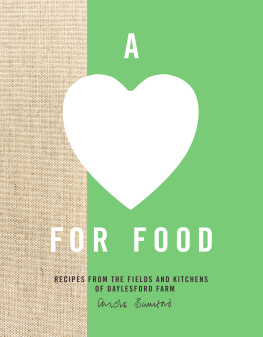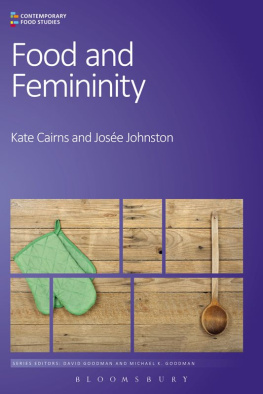food and culture
The classic book that helped to define and legitimize the field of food and culture studies is now available, with major revisions, in an affordable e-book version (978-0203-07975-1).
The third edition includes forty original essays and reprints of previously published classics under five Sections: Foundations; Hegemony and Difference; Consumption and Embodiment; Food and Globalization; and Challenging, Contesting, and Transforming the Food System.
Seventeen of the forty chapters included are either new to this edition, rewritten by their original authors, or edited by Counihan and Van Esterik.
A bank of test items applicable to each article in the book is available to instructors interested in selecting this edition for course use. Simply send an email to the publisher at mailto:textbooksonline@taylorandfrancis.com
Carole Counihan is Professor Emerita of Anthropology at Millersville University in Pennsylvania and editor-in-chief of Food and Foodways. Her earlier books include Around the Tuscan Table: Food, Family, and Gender in Twentieth-Century Florence, Food in the USA. and The Anthropology of Food and Body: Gender, Meaning, and Power.
Penny Van Esterik is Professor of Anthropology at York University in Toronto, Canada, where she teaches nutritional anthropology, in addition to doing research on food and globalization in Southeast Asia. She is a founding member of WABA (World Alliance for Breastfeeding Action) and writes on infant and young child feeding, including her earlier book, Beyond the Breast-Bottle Controversy.
First published 2013
by Routledge
711 Third Avenue, New York, NY 10017
Simultaneously published in the UK
by Routledge
2 Park Square, Milton Park, Abingdon, Oxon OX14 4RN
Routledge is an imprint of the Taylor & Francis Group, an informa business
2013 Taylor & Francis
The right of the editors to be identifi ed as the authors of the editorial material, and of the authors for their individual chapters, has been asserted in accordance with sections 77 and 78 of the Copyright, Designs and Patents Act 1988.
All rights reserved. No part of this book may be reprinted or reproduced or utilised in any form or by any electronic, mechanical, or other means, now known or hereafter invented, including photocopying and recording, or in any information storage or retrieval system, without permission in writing from the publishers.
Trademark Notice :Product or corporate names may be trademarks or registered trademarks, and are used only for identification and explanation without intent to infringe.
Library of Congress Cataloging-in-Publication Data
Food and culture : a reader / edited by Carole Counihan and Penny Van Esterik. 3rd ed.
p. cm.
Includes bibliographical references and index.
1. FoodSocial aspects. 2. Food habits. I. Counihan, Carole, 1948- II. Van Esterik, Penny.
GT2850.F64 2012
394.1'2dc23 2012021989
ISBN 978-0-415-52103-1 (hbk)
ISBN 978-0-415-52104-8 (pbk)
ISBN 978-0-203-07975-1 (ebk)
Typeset in Minion
by Cenveo Publisher Services, Bangalore
Contents
Carole Counihan and Penny Van Esterik |
| Margaret Mead This piece questions attitudes towards food and eating in a worldwhere food is overabundant and we face the ambiguity ofoverindulgence and guilt. |
| Roland Barthes Barthes explains how food acts as a system of communicationand provides a body of images that mark eating situations. |
| Pierre Bourdieu (tr. Richard Nice) Bourdieu addresses differences between taste of luxury and tasteof necessity through his theory of class distinction. |
| Claude Lvi-Strauss This classic structuralist statement, often critiqued, shows how foodpreparation can be analyzed as a triangular semantic fi eld, much likelanguage. |
| Mary Douglas Douglas applies structural analysis to the establishment of Jewishdietary rules as a means to develop self-control, distinction, and a senseof belonging based on the construction of holiness. |
| Marvin Harris Materialists like Harris reject symbolic and structuralist explanations andexplain food prohibitions based on economic and ecological utility. |
| Jack Goody The early industrialization of food processing was made possible byadvancements in preservation, mechanization, marketing, andtransport of food items. These advances also separated urban and ruralsocieties from food manufacturing. |
| Sidney W. Mintz Colonialism made high-status sugar produced in the Caribbeaninto a working class staple. |
| Psyche Williams-Forson Ethnographic, historical, and literary research reveals not onlycontrolling and damaging stereotypes about African Americans andchicken but also the ways Black women have used chicken as a form ofresistance and community survival. |
| T.J.M. Holden Cooking shows featuring male chefs predominate on Japanesetelevision and propagate one-dimensional definitions of masculinitybased on power, authority, and ownership of consumer commodities. |
| Rebecca Swenson The programs of The Food Network manifest gender stereotypeswhile also providing an avenue for challenging ideas of male andfemale roles regarding food. |
| Anne Allison Japanese mothers, in preparing elaborate lunch-boxes for theirpreschool children, reproduce state ideologies of power. |
| Carole Counihan Food-centered life histories portray the voices and perspectivesof traditionally muted Hispanic women of rural southern Coloradowhose food stories reveal differential behaviors and consciousnesswhich promote empowerment. |
| Christopher Carrington Because feeding work is complex, laborious, and highly gendered,it is problematic in lesbigay families because a full accounting of itwould destroy illusions of equality and call into question masculinityof gay men who do it and femininity of lesbians who do not. |
| Rachel Slocum By applying feminist materialist theory, Slocum analyses theembodiment of race and its manifestations through food practicesand behavior displayed at the farmers market. |
| Dylan Clark Punk cuisine based on scavenged, rotten, and/or stolenfood challenges the hierarchy, commodifi cation, toxicity, andenvironmental destruction of the capitalist food system. |
| Caroline Walker Bynum Medieval women used food for personal religious expression,including giving food away, exuding foods from their bodies,and undertaking fasts to gain religious and cultural power. |
| Susan Bordo Bordo argues that eating disorders and body image issues arecreated through social and media pressures that target allwomen regardless of race or class. |
|







